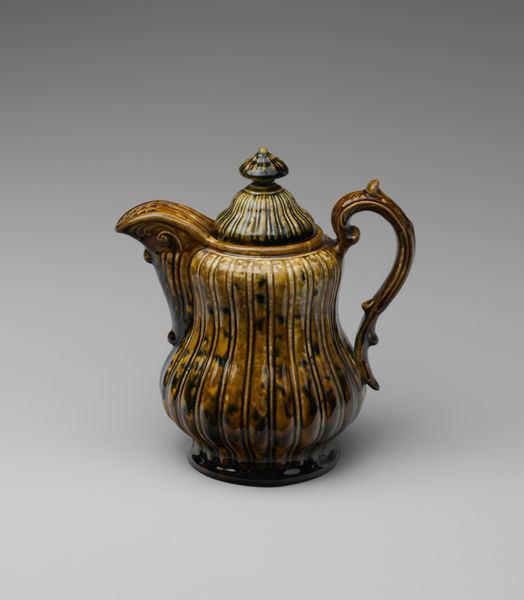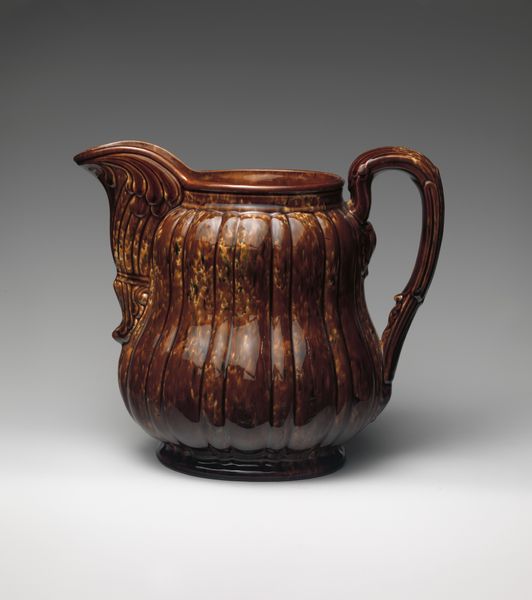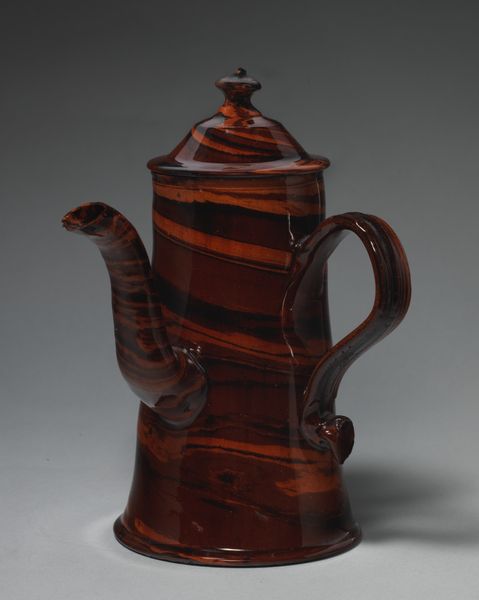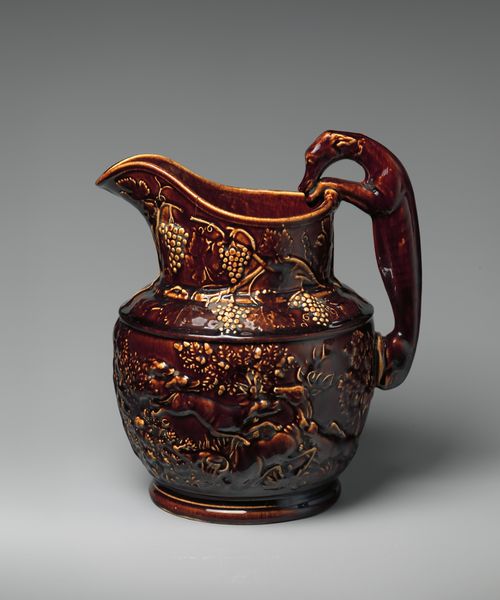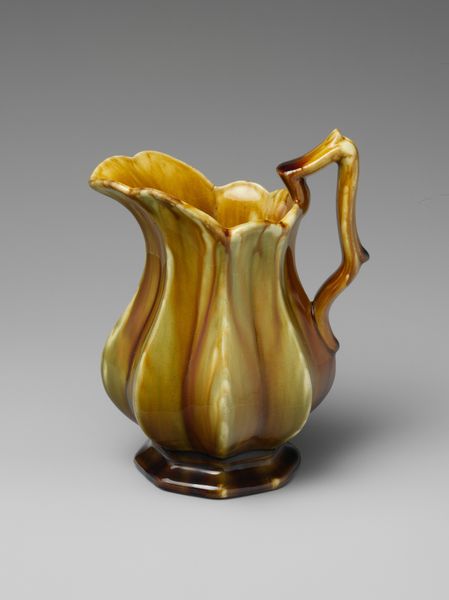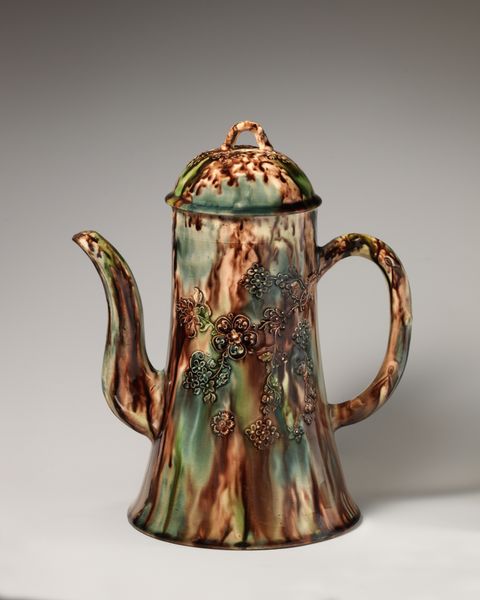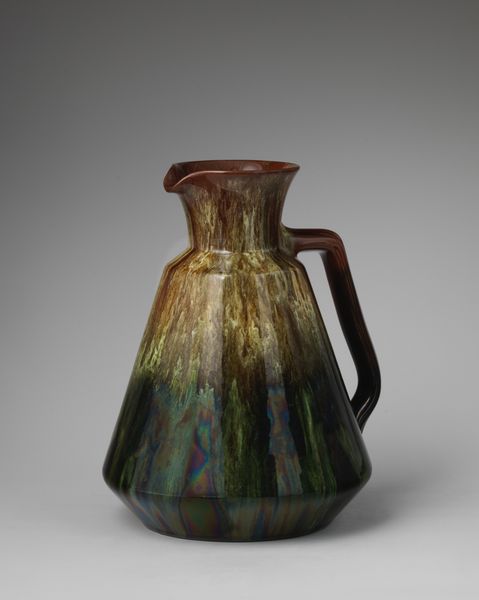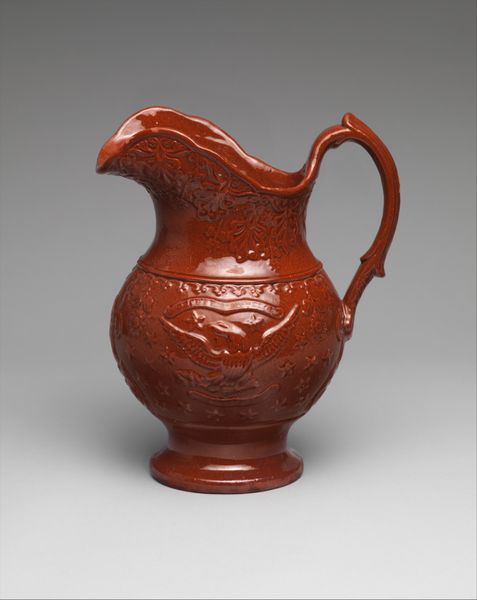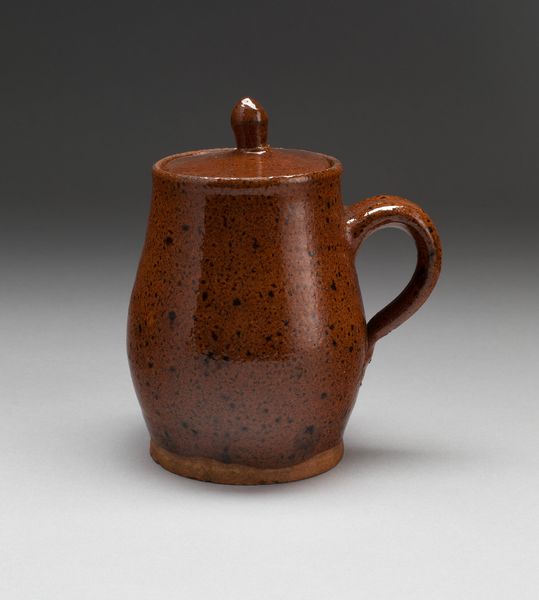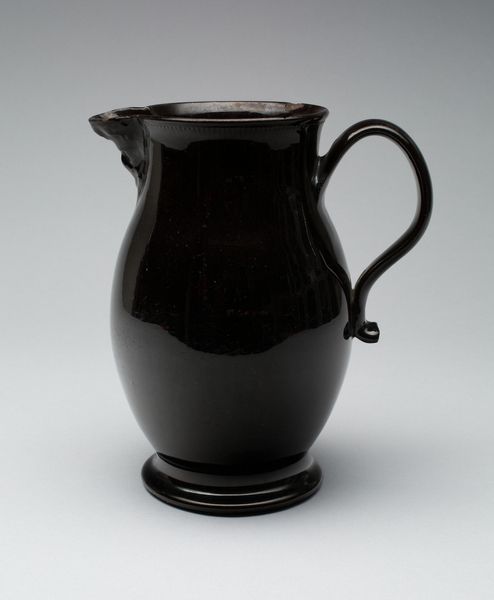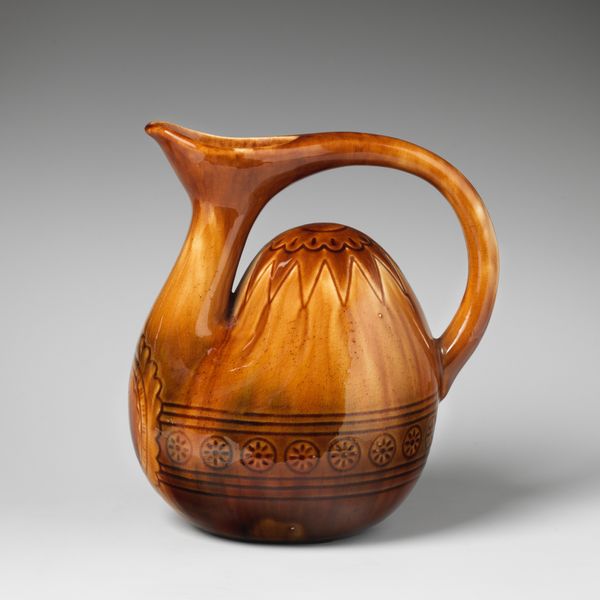
ceramic, earthenware
#
ceramic
#
earthenware
#
united-states
#
decorative-art
Dimensions: H. 12 1/4 in. (31.1 cm)
Copyright: Public Domain
Curator: This lovely example of American decorative art is a coffeepot created by Lyman, Fenton & Co. sometime between 1846 and 1858. It’s earthenware with a Rockingham glaze and offers insight into the styles popular in American homes during the mid-19th century. Editor: Wow, it’s intense, isn't it? Almost violently brown. And glossy! It’s the sort of thing you’d expect to find in a dimly lit Victorian parlor, casting reflections from the gas lamps. Does it evoke a slightly sinister atmosphere for anyone else? Curator: Well, the Rockingham glaze, characterized by its mottled brown appearance, was indeed quite popular. It speaks to a particular aesthetic preference, a move away from earlier, perhaps simpler styles. Editor: It reminds me of those old photographs that fade into sepia tones, rendering the past a murky dream. Although that handle looks very uncomfortable. It makes you wonder who brewed the coffee, and who had to pour it with that precarious grip? Curator: Function and design sometimes collide. The elaborate glazing techniques certainly made these pieces desirable, showing the skill and artistry of the makers, highlighting the burgeoning pottery industry of the United States. Remember that decorative pieces like this spoke to a growing middle class and their aspirations for refinement. Editor: Refinement through aggressive glossiness! I suppose even back then, the aspiration was a display of prosperity. That striated effect, though - it’s almost geological. It's like someone sliced open a mudstone formation and slapped a spout on it. A bold statement piece. But did it actually pour well, that's my question! Curator: Evidence would suggest its form, function and aesthetic were desired, no doubt. Though these glazes could sometimes contain lead, a testament to the lack of regulation and awareness of health impacts. Considering the piece is housed in The Metropolitan Museum of Art, it's clear that what it symbolizes culturally and historically continues to intrigue us. Editor: Absolutely. Its darkness makes me reconsider beauty in everyday objects. It’s a curious concoction of art, industrial ambition, and potential slow poisoning... I appreciate it! It certainly has character. Curator: A darkly elegant, uniquely American character. I think it reveals a chapter in the narrative of artistic and industrial growth and reminds us that even the humblest household items tell a story.
Comments
No comments
Be the first to comment and join the conversation on the ultimate creative platform.


